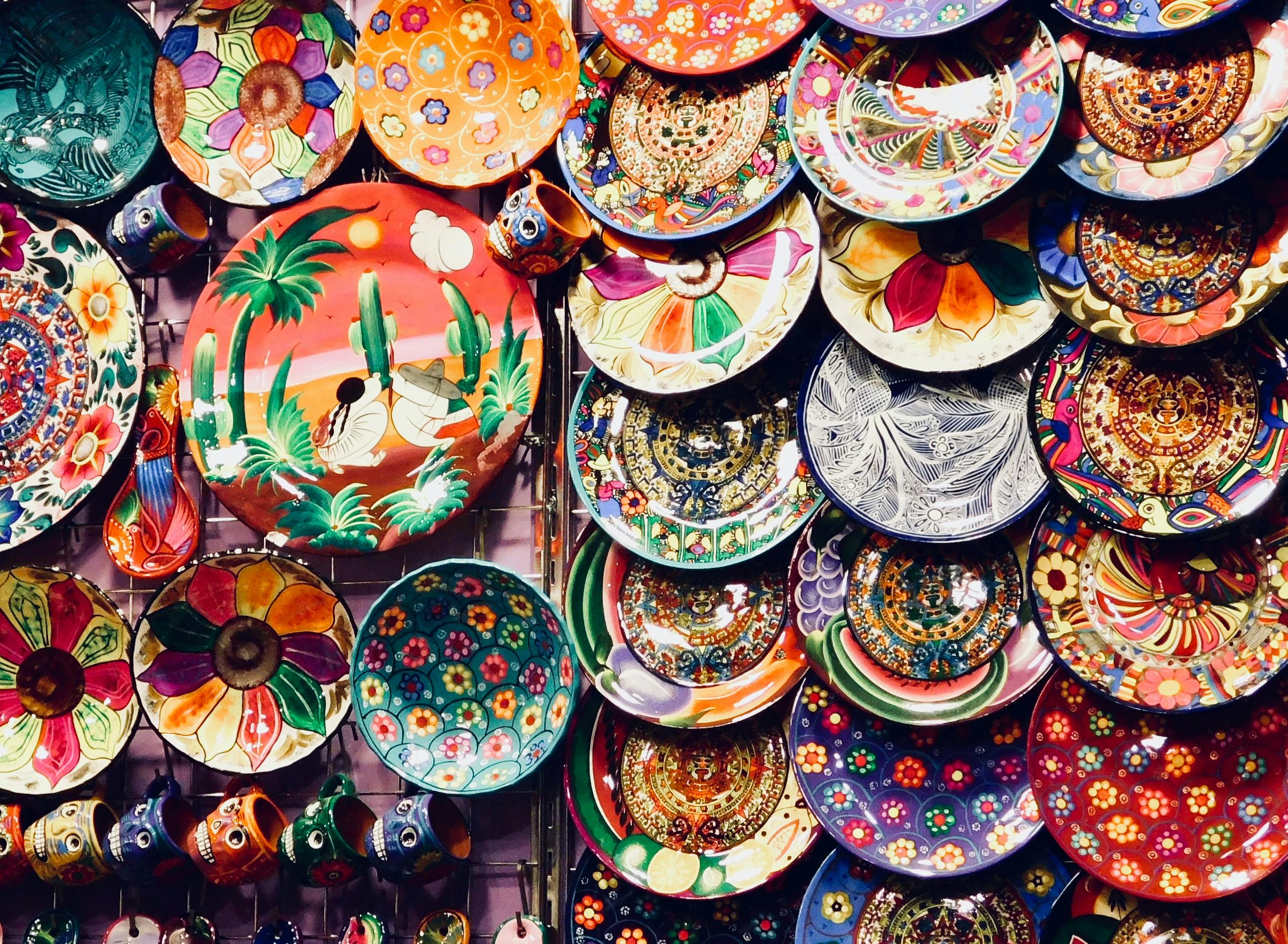Uttar Pradesh (UP), India’s cultural heartland, is famous for its diverse Art and Handicrafts—from royal embroideries to silk sarees, brassware to pottery. Each craft has a history, artisans behind it, and a tradition you can feel in every piece. Explore the most famous crafts from UP, their origins, making process, specialties, and where to find them.
1. Chikankari (Lucknow)
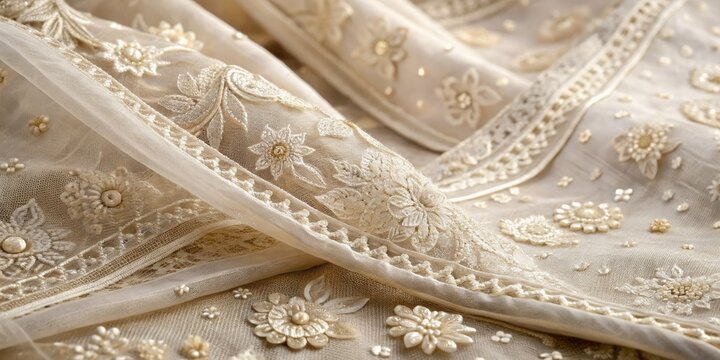
- History & Significance: Introduced during Mughal era, especially under Noor Jahan, Chikankari became synonymous with Lucknow.
- Crafting Process: Intricate white thread embroidery (36 types of stitches like bakhiya, phanda, murri) on muslin, chiffon, silk. Designs are first block‑printed, hand‑stitched, and then washed to remove marks.
- Specialty: Light, breathable, yet elegant—ideal for summers.
- Where to Buy: Lucknow’s Chowk, Hazratganj, and online stores.
2. Zardozi & Zari Embroidery (Lucknow, Varanasi, Farrukhabad, Agra)
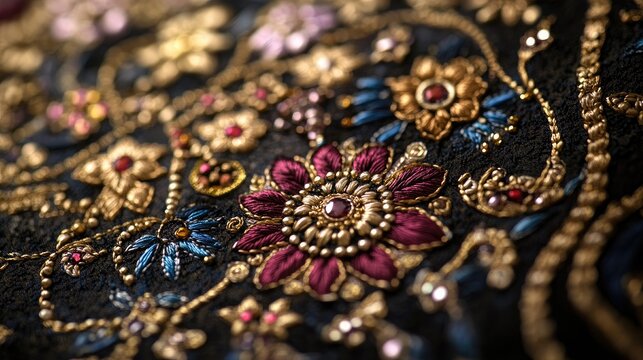
- Legacy: Royal art since the Vedic and Mughal periods.
- Technique: Gold/silver threads, beads, sequins heightened into 3D surface patterns on velvet, silk.
- Best For: Bridal wear, sherwanis, luxury home décor.
- Top Places: Varanasi, Lucknow, Farrukhabad.
3. Banarasi Silk & Brocade (Varanasi, Bhadohi, Chandauli, Azamgarh)
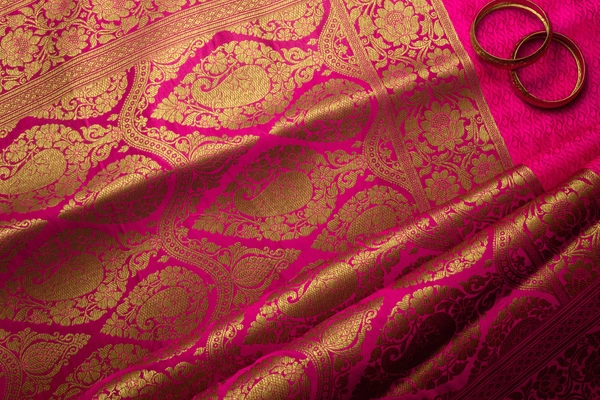
- History: Silk weaving flourished under Mughal patronage. GI-tagged since 2009.
- Craft Process: Brocade weaving of motifs (floral, kalga‑bel, mina) with real gold/silver threads; takes weeks to months per saree.
- What Makes It Unique: Rich texture, complex motifs, bridal-worthy grandeur.
- Where to Find: Varanasi’s Thatheri Bazaar, Godowlia, Bhadohi workshops.
4. Carpet Weaving (Bhadohi, Mirzapur, Shahjahanpur)
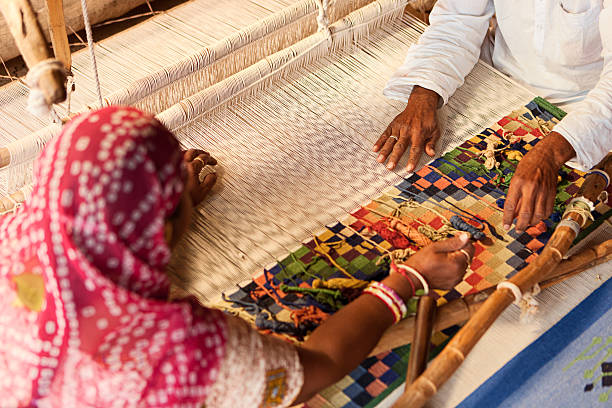
- Overview: UP produces over 90% of India’s hand-knotted carpets; centers date to Mughal arrival.
- Technique: Wool or silk yarn hand-tied on looms (tapka method), dyed naturally. Styles include Aubusson, Persian motifs, Soumak weave.
- Why It’s Special: Durable, richly detailed, export quality.
5. Brass & Metalware (Moradabad, Etawah, Sitapur)
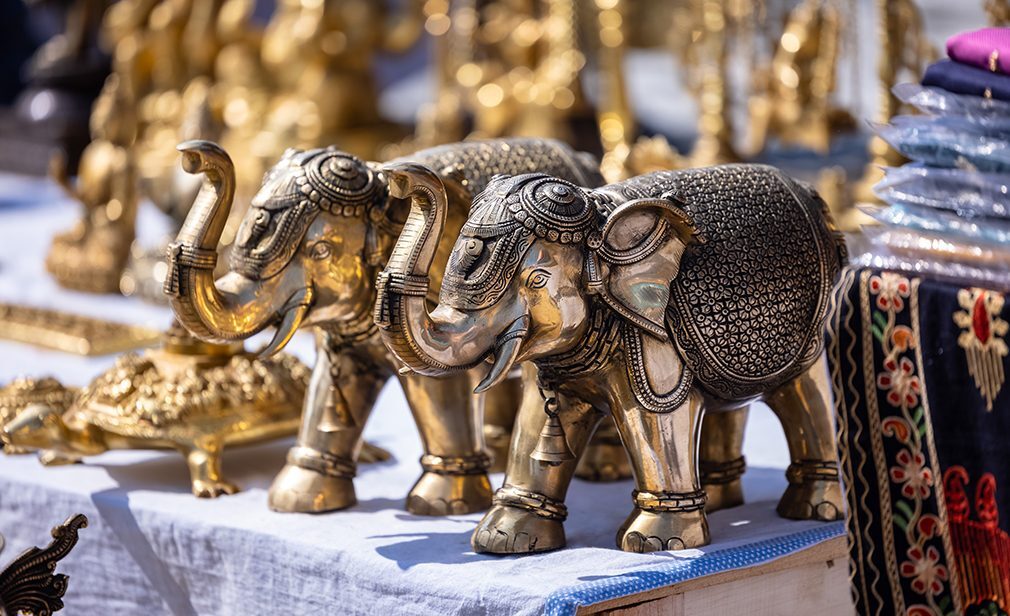
- Heritage: Known as Pital Nagri, exporting metal art globally.
- Crafting Technique: Brass/copper melted, hammered or cast, engraved using nakshi/khudai; often enamelled or silver-plated.
- Popular Products: Trays, vases, idols, lamps, bowls, kunds.
- Where to Shop: Moradabad showrooms and bazaars.
6. Pottery & Ceramic (Khurja, Chunar, Rampur, Nizamabad)
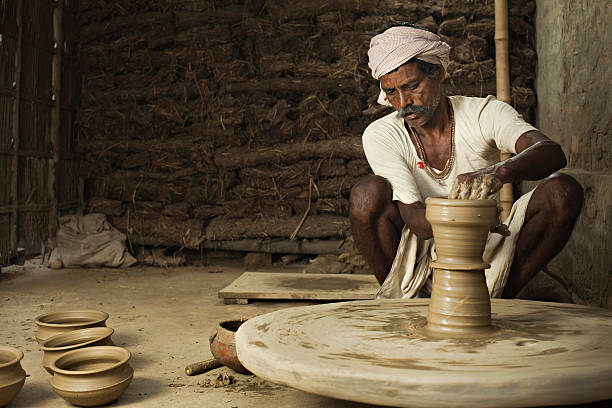
History: One of India’s oldest centers for glazed pottery, Khurja’s craft began centuries ago—potters moved from Multan or Egypt under Mughal patronage. The Government established a pottery center in 1942 to modernize it.
Technique: Clay blended with feldspar and quartz (‘safed mitti’), molded using molds or wheels, then fired at ~1200 °C. Hand-painted in blue, brown, orange floral or geometric motifs, glazed for luster. Some new variants glow in the dark!
Specialty: Strong, colorful, dishwasher-safe; traditionally used for cooking due to acidity-neutralizing properties.
7. Wood Craft & Lacquerware (Saharanpur, Varanasi Lakes)
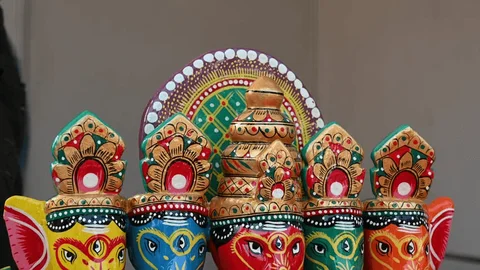
- Legacy: Saharanpur is famous for intricate wood-carving on sheesham; Varanasi for lacquer-coated wooden toys.
- Process: Carving floral/geometric/Mughal patterns followed by inlay or polish; lacquerware painted and coated by hand.
- Usefulness: Furniture, trays, decorative panels, toys.
8. Sanji Art (Mathura)
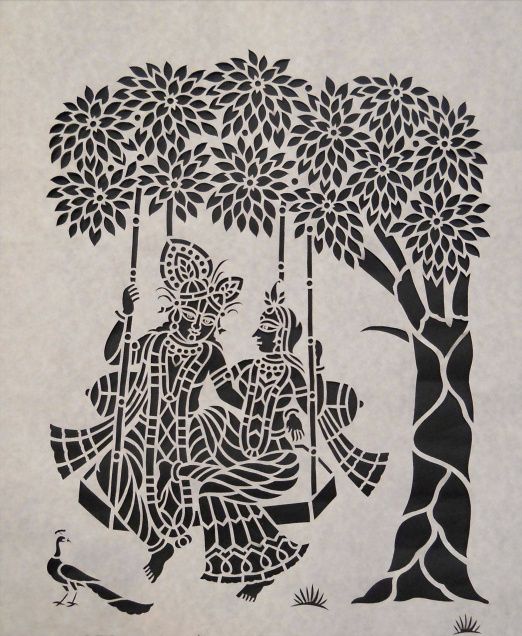
- Unique Tradition: Paper stenciling art for temple décor (esp. Holi & Janmashtami).
- Technique: Stencils cut from paper, layered and painted to create symmetrical floral or mythological scenes.
- Where to Find: Mathura temples, artisans’ workshops.
9. Phool Patti ka Kaam (Aligarh, Rampur)
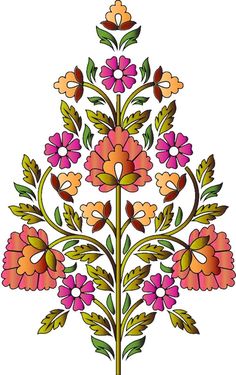
- Heritage: Mughal-era appliqué-embroidery combining patchwork and floral motifs.
- Work: Cut fabric appliqués sewn on muslin/organza, with stem stitching and bodice seams.
Attar & Eau de Cologne (Kannauj)
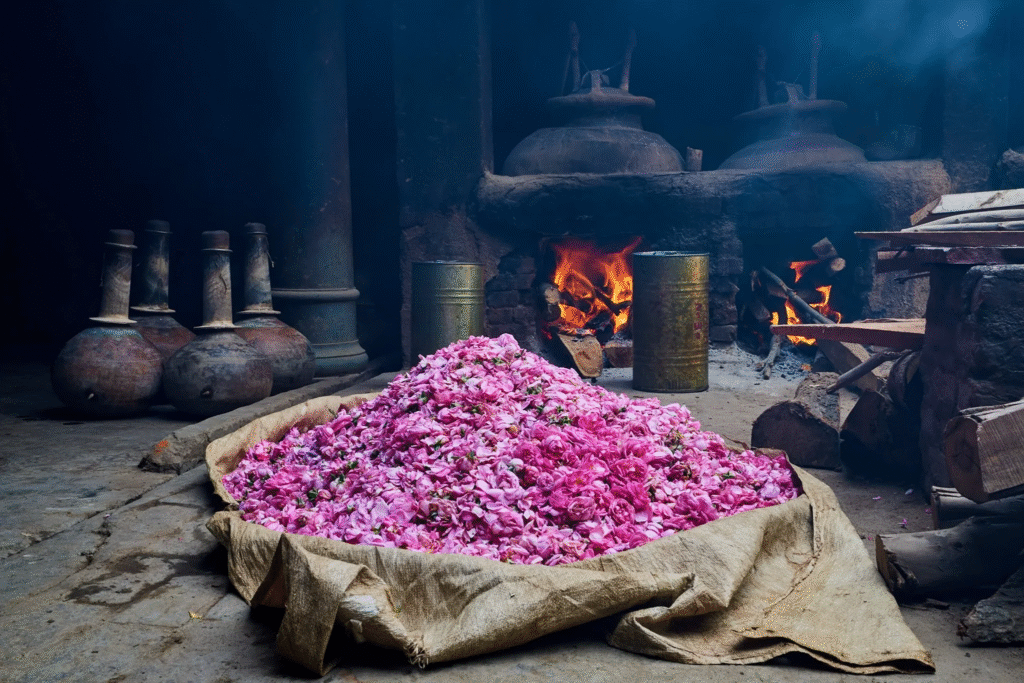
- Overview: Known as “Perfume Capital of India,” with distillation tradition dating centuries. GI-tagged.
- Crafting Method: Steam or hydro‑distillation of flowers/herbs into base sandalwood oil.
Aromas: Keora, khus, champa, zafran, rose.
11. Jewellery & Enamel Work (Lucknow, Aligarh)
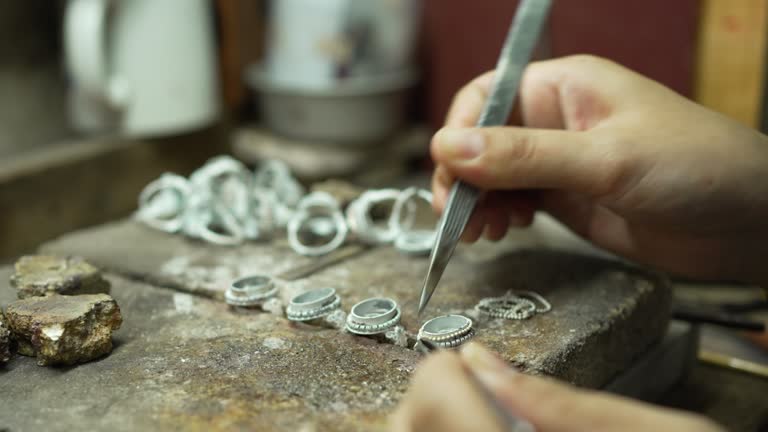
- Legacy: Colonial and Nawabi patronage birthed silver enamel (Bidri/Zarbuland) and bone/ivory carving.
- Craft: Silver inlay on copper/tray, motifs of flora and royal scenes; Bangle, cufflinks, jewelry pieces.
12. Terracotta Art (Gorakhpur)
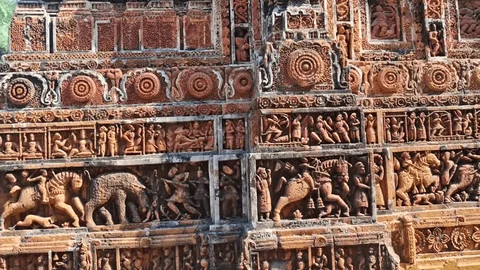
- Overview:
Gorakhpur terracotta is an ancient craft where clay is molded into expressive forms – animals, deities, decorative items – and then baked. - History & Significance:
Rooted in Vedic traditions, terracotta is both artistic and ritualistic, symbolizing connection to nature and earth. - Craftsmanship:
Clay is hand-molded, dried, and fired in kilns. Artisans skillfully design motifs using locally sourced materials. - Where to Find:
Terracotta works are mainly found in Aurangabad and nearby Gorakhpur villages.
13. Glassware of Firozabad
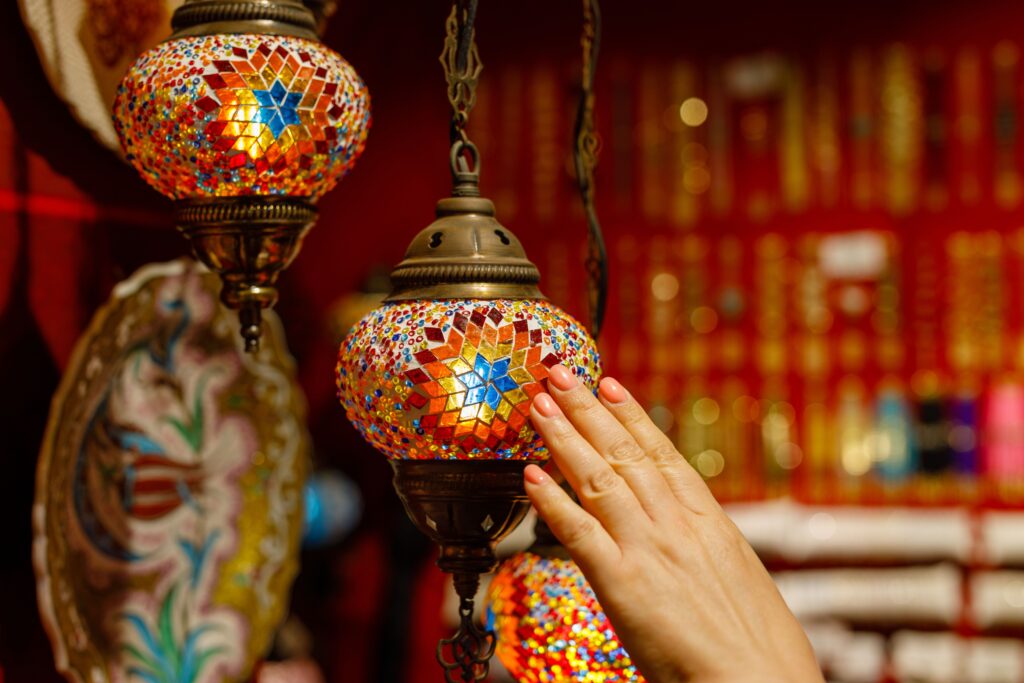
- Overview:
Firozabad, known as the “City of Glass,” is famous for its vibrant glass bangles and decorative items. - Process:
Molten glass is blown, shaped, and colored using traditional tools and furnaces. The glass bangles are often handmade without any machine. - Cultural Value:
Glass bangles are a symbol of beauty and tradition in Indian weddings and festivals. - Where to Buy:
Firozabad markets and national handicraft fairs.
14. Leather Craft (Kanpur)
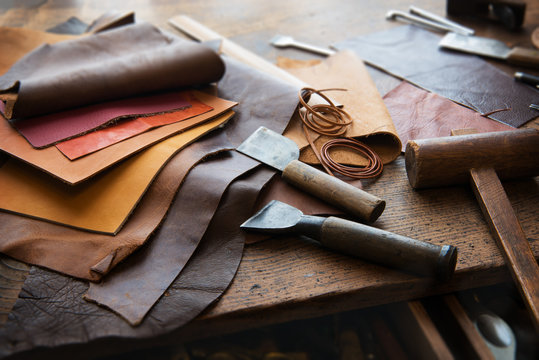
- Overview:
Kanpur is a major hub for leather products, from shoes and belts to bags and jackets. - Speciality:
Known for fine quality and finishing, Kanpur’s leather goods are also exported globally. - Where to Shop:
Kanpur leather markets and export outlets.
15. Stone Carving (Varanasi & Agra)
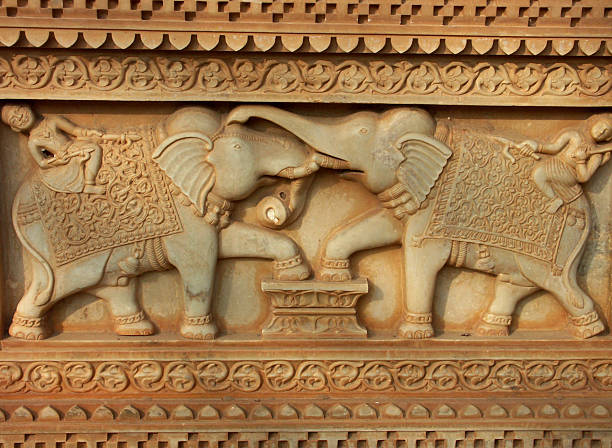
- Overview:
Stone carving in UP ranges from marble sculptures to sandstone temple work and souvenir items. - Craftsmanship:
Highly detailed, inspired by temple architecture and Mughal influences. - Where to Buy:
Varanasi lanes, Agra shops, or local handicraft fairs.
16. Other Popular Crafts by District
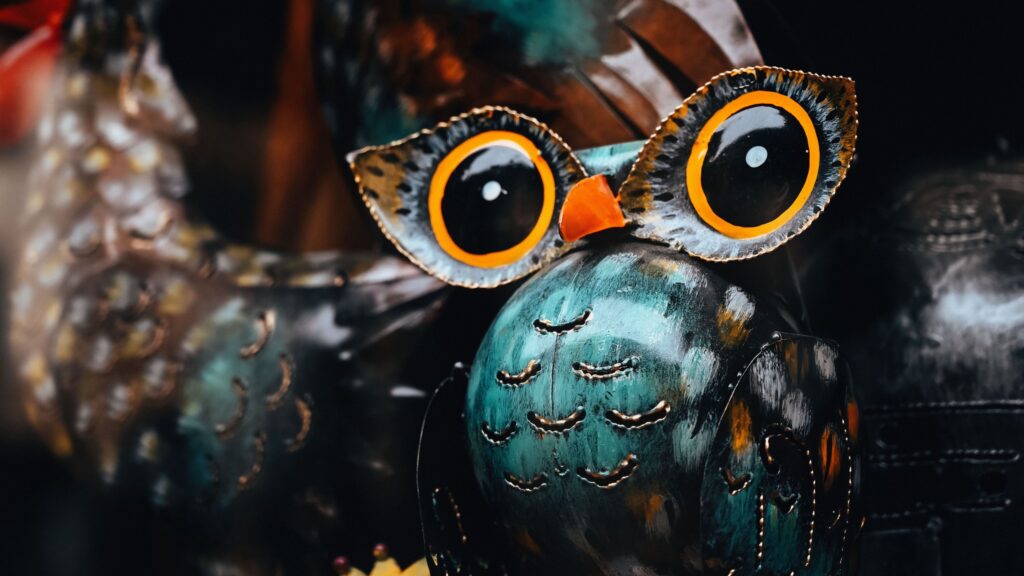
- Pilibhit: Wooden flutes and paduka sandals
- Raebareli: Decorative wood crafts
- Shamli: Iron artwork
- Pratapgarh: Amla craft products
🛒 Buying Authentic UP Crafts: Tips
- Always look for GI tags for authenticity (e.g. Banarasi saree, Bhadohi carpet, Kannauj attar).
- Buy directly from artisan clusters or ODOP outlets.
- Check handcrafted quality: No machine-finished, no poor seams.
- Use trusted online platforms: GeM, Tribes India, IndiaMART, Amazon Handmade.
🌿 Conclusion
Uttar Pradesh offers a living gallery of Indian craftsmanship, where each craft carries centuries of history and cultural influence. From the softness of chikankari to the shine of brassware, the fragrance of attar to the weave of carpets, every piece reflects stories of artisan skill, heritage, and soul. Whether you’re a traveler or collector, UP’s art & handicrafts make for a journey worth experiencing.
